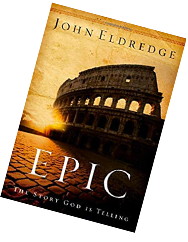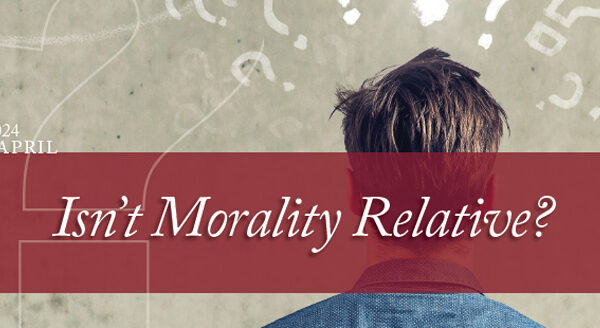Back to series


Recommended Reading:
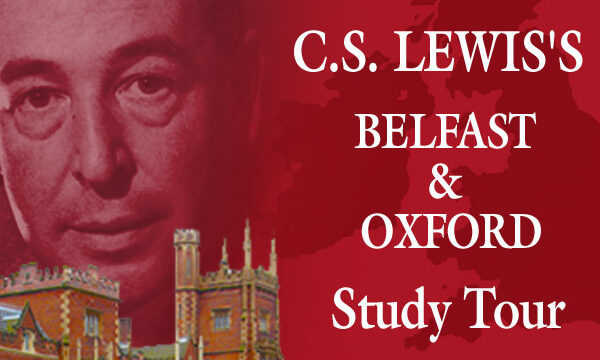
Download or Listen to Audio
Modern Mythology Matters
Click here to open a Print-Friendly PDF
Since the advent of Superman: The Movie in 1978, ushering in the modern era of superhero cinema, theater audiences have enjoyed blockbuster films focused on comic book characters.
What accounts for the staying power of these stories and the billions of dollars in ticket sales? What makes fans show up at opening night screenings, in costume, to cheer their favorite heroes or, on occasion, a favorite villain? Might these silver-screen saviors tap into a deeper longing that humanity cannot seem to shake?
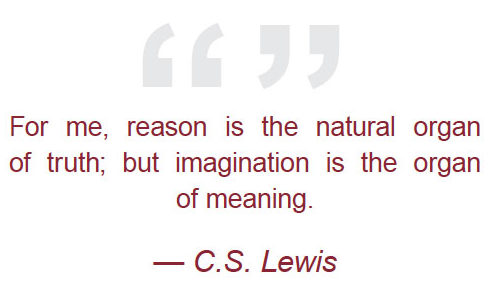 Both C.S. Lewis and J.R.R. Tolkien believed a love for myth afforded an opportunity to convey truth about God to an unsuspecting world.
Both C.S. Lewis and J.R.R. Tolkien believed a love for myth afforded an opportunity to convey truth about God to an unsuspecting world.
Might we find similarities between Lewis’s Narnia Chronicles and today’s Marvel movies? In this article I will explore that possibility and encourage the use of superhero films as doorway to deeper theological truth.
Lewis once wrote: “Any amount of theology can now be smuggled into people’s minds under the cover of romance [fiction] without their knowing it.”1
Both men did a considerable amount of this through well-known works, such as Tolkien’s The Silmarillion and Lewis’s The Chronicles of Narnia, stories containing creation accounts shaped by the opening chapters of the book of Genesis.
Decades after the passing of these men, Lewis’s words still ring true amidst a silver-screen culture of superhero films that contain fingerprints of the gospel.
 In 2018, Marvel Studios released Avengers: Infinity War to a record-shattering opening weekend of $630+ million worldwide, and an overall global gross of more than $2 billion.2
In 2018, Marvel Studios released Avengers: Infinity War to a record-shattering opening weekend of $630+ million worldwide, and an overall global gross of more than $2 billion.2
Infinity War is the first half of a story that concludes a decade of Marvel comic book superheroes turned silver-screen sensations.
In this culmination, heroes such as Iron Man (Robert Downey Jr.), Captain America (Chris Evans), Spider-Man (Tom Holland), Black Widow (Scarlett Johansson), Thor (Chris Hemsworth), Doctor Strange (Benedict Cumberbatch), and the Guardians of the Galaxy band together to defend the universe from Thanos (Josh Brolin), an antagonist who seeks the power to extinguish half of all life from the universe.
This threat reveals a cosmos in need of eucatastrophe — a sudden, unexpected turn of events that avoids impending doom — as Avengers: Infinity War sees most of the characters die.
That word eucatastrophe finds it roots in the mind of one of the greatest literary luminaries of the twentieth century, J.R.R. Tolkien.3 The author of The Hobbit and The Lord of the Rings, among others, he had a deep appreciation for stories wherein heroic characters faced grave threats.
It was a love for this sort of mythic tale — especially Norse mythology — that influenced him to create the world known as Middle-earth. That same appreciation brought him into friendship with another well-known twentieth-century author, C.S. Lewis.
In his book Epic, author John Eldredge writes of life as a story, that “things were once good, then something awful happened, and now a great battle must be fought or a journey taken. At just the right moment (which feels like the last possible moment) a hero comes and sets things right, and life is found again.”4
This feels like Tolkien’s idea of eucatastrophe, and the sequel to Avengers: Infinity War, Avengers: Endgame, will likely conclude similarly when it releases to theaters next month.
Eldredge argues that Scripture follows a pattern of creation/peaceful origin, fall/something awful, redemption/a hero comes to rectify, and restoration/life found again. Furthermore, he comments on how Hollywood echoes this narrative arc in films such as Star Wars, Braveheart, Gladiator, The Lord of the Rings, and The Matrix, among others.5
These tales begin with a sense of peace. Something happens to shatter that peace. A journey is undertaken to mend that shattered peace. Eventually peace is restored. This pattern is displayed amongst various genres in Scripture, much like genres of film: history, poetry, wise sayings, romances, epic action, prophecy, personal letters and apocalyptic writings.
For superhero films, their value emanates from characters and story similarly structured, serving as “modern myth” for our present — a mode that often echoes familiar biblical themes.
 The road to making superhero movies that manifest as modern “gospel myth” began in the spring of 1938 via the panels and pages of the first issue of Action Comics, wherein Jerry Siegel and Joe Shuster — two Jewish teens from Cleveland, Ohio — chronicled the story of Kal-El of Krypton.
The road to making superhero movies that manifest as modern “gospel myth” began in the spring of 1938 via the panels and pages of the first issue of Action Comics, wherein Jerry Siegel and Joe Shuster — two Jewish teens from Cleveland, Ohio — chronicled the story of Kal-El of Krypton.
A refugee from a planet doomed to explode, this Last Son of Krypton was sent by his father Jor-El to Earth to be raised by a simple farming couple in middle America.
Taking an earthly identity as Clark Kent, Kal-El would come to be known by another name: Superman. As longtime DC Comics scribe Grant Morrison writes in Supergods:
There is a persistent set of characteristics that define Superman through decades of creative voices and it is that essential, unshakeable quality of Superman-ness the character possesses in every incarnation, which is divinity by any other name. Specifically there was the western deity he best resembled: Superman was Christ, an unkillable champion sent down by his heavenly father (Jor-El) to redeem us by example… but if the story of Jesus has a central theme it is surely this: when a God elects to come to earth he has to make a few sacrifices.6
In his book Superman: The Unauthorized Biography, National Public Radio personality Glen Weldon writes of Superman’s debut: “with Siegel’s use of the phrase ‘sleeping babe’, a biblical subtext forever becomes part of Superman’s DNA; the reader may think of Moses amongst the reeds or Jesus in the manger… it’s an element of the character that would inspire comics writers and filmmakers for years to come.”7
Forty years after Superman burst onto the pages of Action Comics, the Last Son of Krypton embraced the silver screen with a film release that let us believe a man could fly. With Superman: The Movie the modern superhero film was born and provided what Weldon calls “an essential narrative structure that would be iterated again and again by every superhero film to follow.”8
That structure often consists of four general elements: Origin, Training/Wilderness Experience, Heroic Reveal, and Confrontation. Origin grapples with questions of “who” and “how” that explain the “why” behind a character, while the training and/or wilderness experience sees a character develop abilities in preparation for the calling/mission/destiny ahead. Once that training is concluded, some degree of heroic reveal occurs, where the character’s abilities are put to use out in the world.
And finally, the confrontation, wherein the story really begins with the hero and the villain coming face to face.9 While these elements are present in an overwhelming majority of silver screen superfilms, they also frame heroic tales in Scripture. For example, Moses and Christ share similar origin stories involving lowly birth and miraculous escapes from infanticide by fleeing to Egypt (Exod. 2:1–10, Matt. 2:13–15). Both Moses and Jesus endure wilderness experiences.
Although Moses’s story begins with a confrontation in the wilderness, it is not with the Evil One, but the Eternal One. This is a two-part heroic reveal: God reveals Himself at Sinai to conclude Moses’s “training”; afterward Moses returns to Egypt to confront Pharaoh, the story’s villain (Exod. 3:1–17; 5:1–9).
Moses’s leadership over Israel serves as a kind of forerunner of Christ’s coming role. Israel’s redemption from Egypt foreshadows what Christ would later accomplish on Calvary’s cross (John 19:28–37). It is this overarching story thread of peace, something awful, rescue, and restoration, repeated many times in Scripture, a pattern for what becomes the “superhero film formula.” We could find similar patterns in the narratives about Samson, David, and others in the Old Testament.
 Several years before Superman sped onto the scene, and thousands of miles from Cleveland, Ohio, J.R.R. Tolkien and C.S. Lewis spent a September evening in 1931 strolling Addison’s Walk at Oxford University discussing the nature of myth.
Several years before Superman sped onto the scene, and thousands of miles from Cleveland, Ohio, J.R.R. Tolkien and C.S. Lewis spent a September evening in 1931 strolling Addison’s Walk at Oxford University discussing the nature of myth.
Tolkien wondered why it was that Lewis could so readily accept stories of gods dying and resurrecting in ancient mythologies that both men adored, but when something similar was encountered in the story of Jesus, Lewis rejected it outright.
As Lewis hadn’t a worthy reply, Tolkien further explained that he understood ancient mythologies to be myths made by men, while the story of Christianity was God’s myth, a true myth.10
Specifically, that these ancient myths were imperfect reflections that contained glimpses of the true myth, that in the true myth of Jesus all these other myths found consummation and conclusion.11
As Tolkien writes in his essay “On Faire Stories”:
The Gospels contain a fairy-story, or a story of a larger kind which embraces all the essence of fairy-stories. They contain many marvels—peculiarly artistic, beautiful, and moving: “mythical” in their perfect, self-contained significance; and among the marvels is the greatest and most complete conceivable eucatastrophe. But this story has entered History and the primary world; the desire and aspiration of sub-creation has been raised to the fulfillment of Creation. The Birth of Christ is the eucatastrophe of Man’s history. The Resurrection is the eucatastrophe of the story of the Incarnation.12
It is traditionally held that within a few weeks of this discussion about myth, in October 1931, Lewis came to faith as a precursor to his own myth making in writing The Space Trilogy and The Chronicles of Narnia, among others.13
Lewis would later write, in a letter to his lifelong best friend Arthur Greeves, that “Christianity works upon someone just as any other myth does, but with one distinct difference: that this myth actually happened.”14
Lewis also wrote: The heart of Christianity is a myth which is also a fact. The old myth of the Dying God, without ceasing to be myth, come down from the heaven of legend and imagination to the earth of history… Christians need to be reminded… that what became fact was also a myth, that it carries with it into the world of Fact all the properties of a myth. God is more than a god, not less. Christ is more than Balder, not less. We must not be ashamed of the mystical radiance resting in our theology. We must not be nervous about “parallels” and “Pagan Christs”: they ought to be there.15
Therefore, any parallels between the Son of Man and the Last Son of Krypton, or the self-sacrificial actions of Captain America and Iron Man in Captain America: The First Avenger and Marvel’s The Avengers films and/or Christ at Calvary are things Lewis wouldn’t have been surprised by. He’d likely say “they ought to be there.” Recall his words about the power of fiction as a pathway for theology.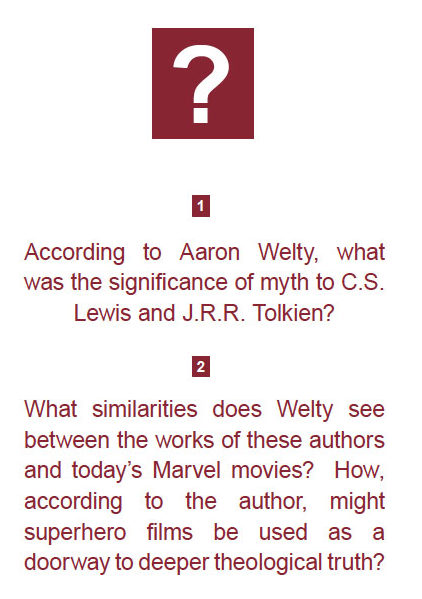
Even so, using common culture and language to point to deeper truth finds biblical foundation in the words of Christ and the apostle Paul. In the ministry of Jesus, this manifest in His engaging the crowds through parables: stories using elements familiar to His audience to draw attention to something unfamiliar or unknown, namely Himself and His work in the world (Matt. 13:3–43).
In first-century Palestine that meant a focus on agriculture: the omnipresent reality that His audience lived most hours of every day.
Decades later, the apostle Paul finds himself at the Areopagus, atop Mars Hill in Athens, debating the philosophers and thinkers (Acts 17:19–21). It’s here that Paul follows in the footsteps of Christ by speaking the cultural language of his audience.
Paul does this by acknowledging the inclusivity of the pantheistic religious fervor of Athenian culture (as seen by the multitude of surrounding idols; Acts 17:22–23). He points out the altar to “the Unknown God” and therein begins to point their pantheistic religious understanding toward Christ, even quoting some of their own poets and literary culture makers — such as Epimenides,16 Cleanthes,17 and Aratus18 — who wrote of the Greek god Zeus (Acts 17:23, 28).
Paul applied their words to Christ to make the connection for Athenians that Jesus made previously with a Jewish audience. Jesus, Paul, Tolkien, and Lewis, among others, set an example of using story and cultural language to engage audiences with truth.
While the realm of marvelous myth making presents a continual opportunity to do so, such an effort is not confined to films of fantastic fiction. The underlying principle applies to any realm. Whatever your passion, whatever “language” you speak, this applies. If you’re not engaging the things you are passionate about in this way — as a pathway to point to deeper truth — then you’re doing yourself, your passion, and the world around you a great disservice by engaging in something else: escapism. Instead, learn the language these luminaries understood as a way to shine the light of Calvary’s cross into a darkened world.
|
Notes: 11 Alister McGrath, C.S. Lewis, A Life: Eccentric Genius, Reluctant Prophet (Carol Stream, IL: Tyndale, 2013), 150. |
|||

Aaron Welty
Motivational SpeakerAaron Welty was diagnosed with Cerebral Palsy as a new born, he overcame those early years of low expectations to serve as the Senior Legislative Assistant for Michigan’s 11th Congressional District, wherein he focused on a variety of policy issues. He graduated from Cedarville University in 2006 with a degree in Public Administration. Prior to working on Capitol Hill, Aaron worked in Marketing and Media at The Heritage Foundation. Passionate about the ideas of individual purpose and destiny, his unique story of faith, family, perseverance and chasing dreams has been shared on NBC Nightly News, various radio programs, Roll Call – a nationally syndicated newspaper – and Facing Life Head On, a life-issues focused television program.

Recommended Reading:
John Eldredge, Epic (Thomas Nelson, 2012)
Life, for most of us, feels like a movie we’ve arrived to forty minutes late.
Sure, good things happen, sometimes beautiful things. But tragic things happen too. What does it mean? We find ourselves in the middle of a story that is sometimes wonderful, sometimes awful, usually a confusing mixture of both, and we haven’t a clue how to make sense of it all. No wonder we keep losing heart.
We need to know the rest of the story.
For when we were born, we were born into the midst of a great story begun before the dawn of time. A story of adventure, of risk and loss, heroism… and betrayal. A story where good is warring against evil, danger lurks around every corner, and glorious deeds wait to be done. Think of all those stories you’ve ever loved — there’s a reason they stirred your heart. They’ve been trying to tell you about the true Epic ever since you were young.
There is a larger story And you have a crucial role to play.
 COPYRIGHT: This publication is published by C.S. Lewis Institute; 8001 Braddock Road, Suite 301; Springfield, VA 22151. Portions of the publication may be reproduced for noncommercial, local church or ministry use without prior permission. Electronic copies of the PDF files may be duplicated and transmitted via e-mail for personal and church use. Articles may not be modified without prior written permission of the Institute. For questions, contact the Institute: 703.914.5602 or email us.
COPYRIGHT: This publication is published by C.S. Lewis Institute; 8001 Braddock Road, Suite 301; Springfield, VA 22151. Portions of the publication may be reproduced for noncommercial, local church or ministry use without prior permission. Electronic copies of the PDF files may be duplicated and transmitted via e-mail for personal and church use. Articles may not be modified without prior written permission of the Institute. For questions, contact the Institute: 703.914.5602 or email us.
-
Recent Podcasts
A Welcome Change in Apologetics
by Randy Newman, Aimee Riegert on April 19, 2024We’re burdened for our friends who don’t know...Read More
-
Questions That Matter Podcast – Samuel James and Digital Liturgies
by Samuel James, Randy Newman on April 19, 2024
-
The Side B Stories – Dr. James Tour’s story
by Jana Harmon, James Tour on April 12, 2024
-
Recent Publications
Isn’t Morality Relative?
by Christopher L. Reese on April 1, 2024It is widely accepted in the Western world...Read More
-
Do Muslims and Christians Worship the Same God?
by Andy Bannister on March 1, 2024
-
Artificial Intelligence and Its Impacts on Humanity
by John Lennox on February 13, 2024
0
All Booked
0.00
All Booked
0.00
All Booked
20599
GLOBAL EVENT: 2024 Study Tour of C.S. Lewis’s Belfast & Oxford
https://www.cslewisinstitute.org/?event=global-event-2023-study-tour-of-c-s-lewis-belfast-oxford-2&event_date=2024-06-22®=1
https://www.paypal.com/cgi-bin/webscr
2024-06-22

Next coming event
Days
Hours
Minutes
Seconds
GLOBAL EVENT: 2024 Study Tour of C.S. Lewis’s Belfast & Oxford
On June 22, 2024 at 12:00 pmat Belfast, Northern Ireland & Oxford, EnglandTags
Speakers

Aaron Welty
Motivational Speaker
Team Members

Aaron Welty
Motivational SpeakerAaron Welty was diagnosed with Cerebral Palsy as a new born, he overcame those early years of low expectations to serve as the Senior Legislative Assistant for Michigan’s 11th Congressional District, wherein he focused on a variety of policy issues. He graduated from Cedarville University in 2006 with a degree in Public Administration. Prior to working on Capitol Hill, Aaron worked in Marketing and Media at The Heritage Foundation. Passionate about the ideas of individual purpose and destiny, his unique story of faith, family, perseverance and chasing dreams has been shared on NBC Nightly News, various radio programs, Roll Call – a nationally syndicated newspaper – and Facing Life Head On, a life-issues focused television program.



